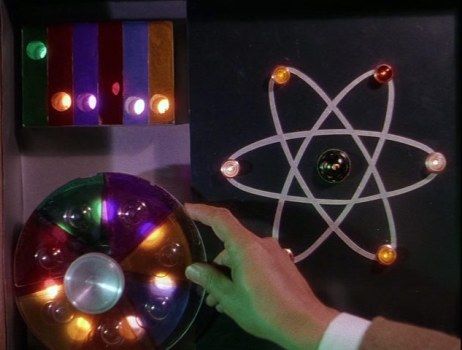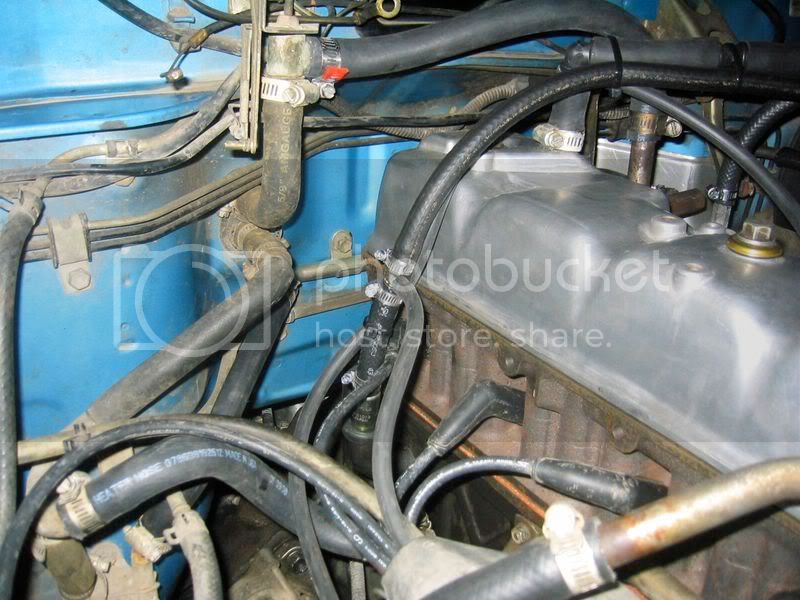Hey Jim. I was thinking about the EVAP system and got lost.
Could you explain how the system will now function in more detail?
Could you explain how the system will now function in more detail?
Follow along with the video below to see how to install our site as a web app on your home screen.
Note: This feature may not be available in some browsers.
This site may earn a commission from merchant affiliate
links, including eBay, Amazon, Skimlinks, and others.

Y'all are lucky i've got the fluPoor Jim, the only guy who knows what he's doin.....
 and am computer bound for now.
and am computer bound for now.FJ40Jim said:The hose connected from PCV tee to dissy cap is a giant sucking vacuum leak.
Delete the tee.
Connect Dissy cap vent to the air filter.

Delete the tank purge hose tee, it'll be a giant sucking vac leak. Dump purge to atmosphere. Swap purge & tank hoses on top of canister to prevent pressure buildup in tank. Disconnect elec connector on top of canister.
No. [in response to A/C idle up connecting]
1/8"BSP. You can stuff a 1/8"NPT in the hole if the plug is a little undersize, or chase the hole out w/ a 18"NPT tap first.
Trapper50cal said:Poor Jim, the only guy who knows what he's doin.....
Hey this klinetime574s brother here, the guy responsible for the "hack" desmog. (neat how it's "hack" even though it hasn't even been started yet, and we posted pics in order to make sure we were good to go)
But there's no bitterness here. I'm just gonna try to have a good time here. Nuthin personal
If this forum was ONLY full of people that know what they're doing, it wouldn't exist.
That is to say, you guys don't need to look down on people for not knowing how to properly remove the emissions system from a 1984 Toyota Land Cruiser and install an aftermarket carb and maintain proper vacuum pressure and ensure consistent thread pitch diameter as the square of the derivative of f(x) as the limit approaching 0 is 1 and and and and head explosion who cares.
I suppose this Jim fella is more like a coach then a teacher, and Webers are like someone giving his football players a basketball and telling them to "do a lay-up."

Don't say "no." There's always a way to hook things up! I'm thinking a retrofitted "HIGH TORQUE" radio control servo, attached with tinkertoy-like mechanisms to OEM throttle linkage. Then, figure out how much rotation of said servo is necessary to raise engine RPM by X number of RPMs (whatev is necessary for A/C). Wire the servo to the A/c "ON" switch, bam, A/C idle up.

Yes, that is basically how the stock system works, with the addition of a VCV to to isolate the dissy when engine is off. Without the VCV, there is a chance that fuel vapor can float into the dissy cap when the engine is off. On startup, fuel may go boom inside dissy causing the infamous "burnt match" smell inside the cab (backflow through the dissy filter).Figured that. OEM diagram is hopeless for anyone under the age of 25, we figured some air moving through cap is better than alternative (i.e. NONE) You sayin disconnect from vacuum and run to air filter where you still get airflow through cap but no vac. leak? Nifty, good call.
No need for RTV. The cap screws down on a watertight O-ring. The big o-ring is still available from toyota if it is dried up & cracked.Hell what if instead I throw some nice orange RTV on that dizzy cap and slap it on there. Yknow, so it doesn't leak.
If there is a bowl vent, then it can be hooked up as stock. Double check that the carb fitting that vent hose is currently connected to is actually a vent, not a cast port that is unfinished. The bowl vent fitting is usually a pressed in steel barb.I don't understand this AT ALL. Aren't there just (2) hoses from the canister that need to be hooked up? One vents the float chamber on the carb. The other pulls vapors into engine. That electrical deal looked like (to me) in the diagram to let the float chamber vent when ignition is OFF. And then close when ignition is ON. Weber has float chamber vent (at I think so, manual says some garbage about evap. sys. and I figured that was it from looking at carb) so shouldn't this method work? (except for the vac leak part on the other hose, but that can be remedied by connecting to air filter instead).
No, it cannot be hooked up as stock. The toyota version uses a vac pot on the carb to pull in AC idle up. The Weber factory installed version (as on a Mustang) uses an elec solenoid in the linkage by the carb.Don't say "no." There's always a way to hook things up! I'm thinking a retrofitted "HIGH TORQUE" radio control servo, attached with tinkertoy-like mechanisms to OEM throttle linkage. Then, figure out how much rotation of said servo is necessary to raise engine RPM by X number of RPMs (whatev is necessary for A/C). Wire the servo to the A/c "ON" switch, bam, A/C idle up.
I don't recommend it either, but the soft intake doesn't crack when subjected to getting stuffed. The aluminum will just distort out of the way.I kept telling my bro it would be BSPT, nice! But I don't suggest "stuffing" in an NPT fitting, that'd be a nice way to crack a rare, expensive 2F manifold.

Have been following the diagram and I am keeping the HAC. (FSM 3-31). Do I need to keep a check valve in there where the line goes over to the distributor?
and if so, is it a "blue" one, or the smaller one over the thermo housing?
On the HIC out the bottom of the air filter housing, there are upper and lower ports. the diagram says the lower port "to intake manifold". where do i route this to the intake manifold?? i see the diagram shows on the intake "to HIC valve", but it is hard to tell exactly what that port is on the diagram.



 (3 cheers for Jim!!!)
(3 cheers for Jim!!!) 

In my opinion, you're out of line here. Everyone has been nothing but supportive of your brother and his build project.
He decided to post on someone else's desmog thread for input. He got feedback from an expert on these engines (whose advice was right on, btw). You're taking it personally. I suggest you listen to his advice, thank him, and move on.








I envision Jim as Edward James Almos asking, "How do I reeech theese Keeeds??!!"
Yes, that is basically how the stock system works, with the addition of a VCV to to isolate the dissy when engine is off. Without the VCV, there is a chance that fuel vapor can float into the dissy cap when the engine is off. On startup, fuel may go boom inside dissy causing the infamous "burnt match" smell inside the cab (backflow through the dissy filter).
If there is a bowl vent, then it can be hooked up as stock. Double check that the carb fitting that vent hose is currently connected to is actually a vent, not a cast port that is unfinished. The bowl vent fitting is usually a pressed in steel barb.
If there is no bowl vent (normal Weber configuration), then disconnecting elec at canister leaves canister vent permanently sealed up.
Edit: As for pulling vapor into the manifold, yes that happens but in a controlled fashion. If the canister purge hose is connected direct to manifold, the engine will not idle, because the intake will be sucking air out of the tank. The stock system will only apply some vacuum to purge hose when the engine is warmed up and when throttle is at cruise. It is driven by a ported carb vac fitting, to sense throttle position and load.
No, it cannot be hooked up as stock. The toyota version uses a vac pot on the carb to pull in AC idle up. The Weber factory installed version (as on a Mustang) uses an elec solenoid in the linkage by the carb.
There are an infinite number of ways to build something to get the AC idle up effect, but they require parts scrounging and fabrication.
Good luck!
